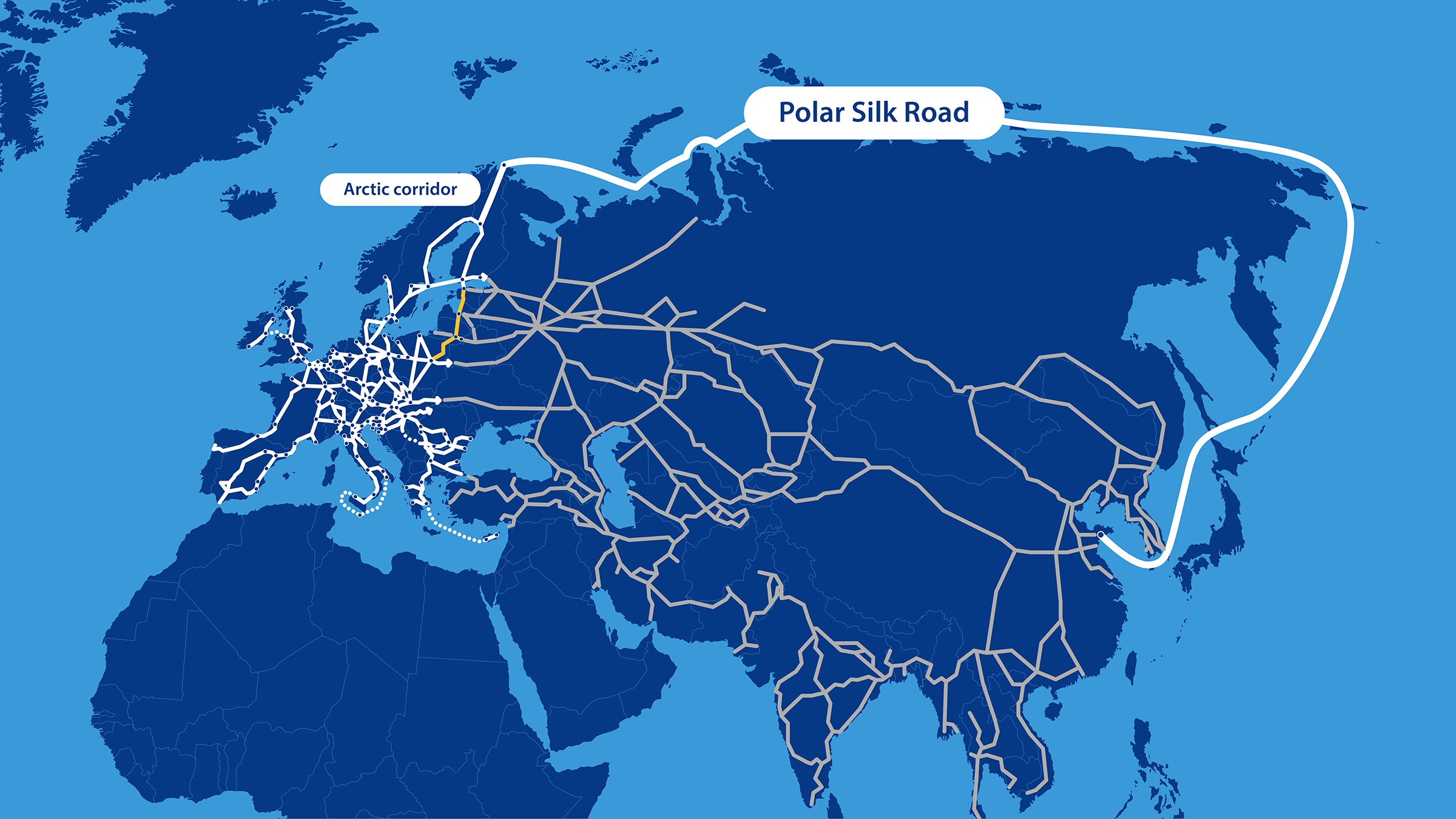By:
Valdis Ligers, SIOR, Frédéric Schneider, SIOR, Bjarne Bauer, SIOR
Project of the Century
The progressive global tendency to lean towards greener thinking is undeniably the new black. One of the most progressive, significant inter-regional infrastructure projects in Europe right now is Rail Baltica. This is not just a philanthropic way of thinking— this may bring a great and attractive portion of fortune to CRE professionals doing business by helping clients execute their real estate and related business plans all around the world.
RAIL BALTICA: THE MISSING PUZZLE PIECE OF THE CONNECTED EUROPE AND EURASIAThe ongoing globalization may be compared to an avalanche. What started as a tiny snowball at the top of the mountain has become a massive movement covering everything. If we take a closer look at the globalization of the production, logistics and transportation fields, we see how regions become borderless and easy to reach.
As one of the top priority transport projects of the European Union (EU), the Rail Baltica will integrate the Eastern Baltic Sea Region into the European continental rail network, and will be built using the most up-to-date technologies and materials—some of which are still in the process of elaboration, standardization, and/or early stages of commercialization. New intermodal freight terminals will be built in each of the Baltic countries to allow for faster and more efficient transfer of containerized and other types of cargo between different transportation modes. Railway stations will represent the latest developments in the area of multimodal passenger terminals connecting conveniently different urban, regional, and long-distance services with car and bike parking, shopping, and recreation areas.

Photo by RailBaltica.org "Role of Rail Baltica in Global Freight Movement"The multimodal transport corridor project involves four countries of the EU: Poland, Latvia, Lithuania, and Estonia. Once the Rail Baltica project is executed, however, an unprecedented scope of Europe and Eurasia connection will arise. Not only will the project provide fast and easy access from Tallinn in the North to the biggest cities and ports in the Western Europe via the North Sea—Baltic TEN-T Core Network Corridor—but it will also become a significant hotspot in the Baltic States connecting the furthest fast-speed railway destinations of the Eastern Asia to the Western Europe. Thereby, the project of Rail Baltica will become the one of the most historic transnational transport projects of its time, discovering a whole new era.
The notability of this project may also be underlined by the steady attention and growing interest in further cooperation from the EU countries that are not directly involved in the Rail Baltica project. For instance, on Aug. 20, 2019, a visit of the Logistics Alliance Germany— representing major German logistics companies—along with Steffen Bilger (MP), Parliamentary State Secretary to the Federal Minister of Transport and Digital Infrastructure and Federal Government Coordinator for Freight Transport and Logistics, was held in the Rail Baltica office in Riga, Latvia. The main goal was to discuss possible modes of cooperation between both sides in terms of logistics, with a focus on freight transport. The Rail Baltica project is expected to significantly save time, create jobs, and rise quantifiable benefits of €16.2 billion, supporting businesses parallel to railroad itself. At least two-thirds of which may potentially be serviced by the Rail Baltica Corridor Alliance.
Michael Riekert, senior consultant Global Corporate Services of NAI Apollo Group from Frankfurt am Main, Germany expressed:
"As one of the leading economic countries in Europe, one of the most important factors in maintaining and promoting exports and imports for Germany is the expansion and improvement of contact and logistics modes with our neighboring countries. The Rail Baltica project is a great opportunity to strengthen and promote trade relations covering Germany, Benelux, France, UK, Poland, Baltics and further to East and North in a foreseeable future."
Therefore, given the need to merge the cross border infrastructure together, to meet and even exceed the needs of our clients—local, international manufacturing and logistics operators, any kind of CRE business representatives and end-users—the idea of the Rail Baltica Corridor Alliance was born.
NEXTRE RAIL BALTICA CORRIDOR ALLIANCEThe NEXTRE Rail Baltica Corridor Alliance is a unique project-based and cross-border union that brings together the best CRE professionals, both regionally and globally. The vision of the NEXTRE Rail Baltica Corridor Alliance is to identify and facilitate the creation and development of satellite real estate businesses servicing Rail Baltica intermodal and multimodal hubs, and to connect and adhere it to any other related businesses within the corridor and beyond.
In order to help multinational tenants to identify opportunities in upcoming locations which provide an attractive cost structure, the NEXTRE Rail Baltica Corridor Alliance would meet their real estate needs and support their overall profitability and business success. “Clients appreciate when they are supported not only in their home market but in markets all around the world,” said Bjarne Bauer, SIOR, managing partner, NAI Sofia Group in Shanghai, China.
"This is certainly one of the most ambitious projects in Europe connecting the Baltic countries with Western Europe..."
The NEXTRE Rail Baltica Corridor Alliance gives its members and ambassadors an exclusive and unparalleled opportunity to be in the heart of the project by becoming the significant link binding all parties, including landlords, investors, developers, and the end-users from all over the world. Therefore, the main goal of the Alliance is to provide the necessary professional support, information, and communication to make this interaction beneficial to all parties.
“This is certainly one of the most ambitious projects in Europe connecting the Baltic countries with Western Europe," says Frédéric Schneider, SIOR, partner of Carter Jonas UK, and the first Ambassador of NEXTRE Rail Baltica Corridor Alliance for the UK.
Now is the time and place to take action and get involved in the project of the century.